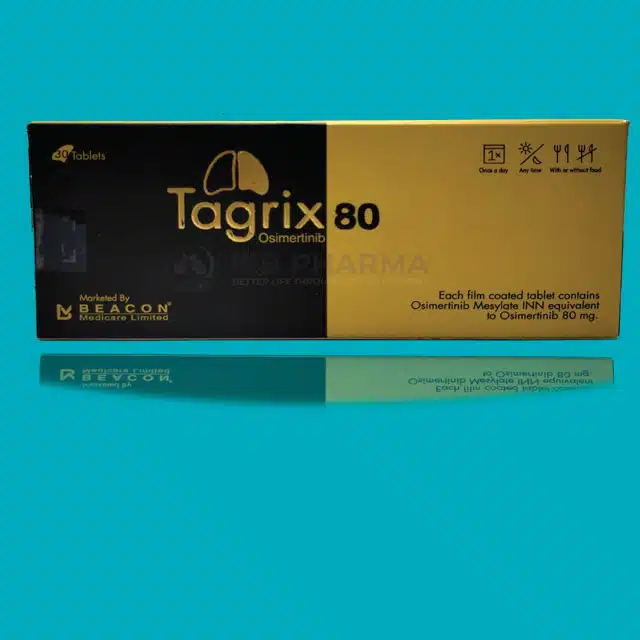
A 62-year-old male with lung adenocarcinoma harboring an exon 19 deletion in the Epidermal growth factor receptor (EGFR) was treated with EGFR-tyrosine kinase inhibitors (TKIs) and several cytotoxic agents. After administering a fifth-line chemotherapy regimen, a liver biopsy revealed a diagnosis of recurrence with a T790M mutation. After an 82-day course of osimertinib therapy, the patient developed osimertinib-induced interstitial lung disease (ILD). Osimertinib was discontinued, and oral prednisolone was started. The ILD quickly improved, but liver metastases progressed and osimertinib was restarted concurrently with prednisolone. The patient showed neither disease progression nor a recurrence of ILD at 5 months. In situations in which no alternative treatment is available, osimertinib rechallenge should thus be considered as an alternative treatment.
Keywords: Tagrix 80 Mg (Osimertinib) interstitial lung disease (ILD), bronchoalveolar lavage (BAL), transbronchial lung biopsy (TBLB)
Introduction
Epidermal growth factor receptor tyrosine kinase inhibitors (EGFR-TKIs) are the standard treatment for non-small cell lung cancer (NSCLC) patients harboring mutations of the EGFR. Third-generation EGFR-TKI osimertinib is a potent inhibitor of active EGFR mutations (such as exon 19 deletion, exon 21 L858R point mutation) and a T790M mutation. However, the most serious adverse reaction associated with treatment by EGFR-TKIs is drug-induced interstitial lung disease (ILD). A case of EGFR mutation-harboring NSCLC that was successfully retreated with osimertinib after the patient developed osimertinib-induced ILD is described.
Case Report
A 62-year-old Japanese male with a 30 pack-year smoking history was diagnosed with stage IV lung adenocarcinoma (cT2aN3M1b) with bone metastases. On examination of a lung biopsy specimen, a diagnosis of adenocarcinoma with the presence of an exon 19 deletion in the EGFR was made. He received up to fifth-line chemotherapy (erlotinib as first-line chemotherapy, cisplatin plus pemetrexed as second-line, carboplatin plus nanoparticle albumin-bound paclitaxel as third-line, afatinib as fourth-line, docetaxel plus bevacizumab as fifth-line), and the evaluation after 6 courses of docetaxel plus bevacizumab showed disease progression, mainly with liver metastases. Since he still maintained a good performance status, a liver biopsy was performed to check for the presence of a T790M mutation. On examination of the liver biopsy specimen, adenocarcinoma with an exon 19 deletion and a T790M mutation was diagnosed.
Osimertinib (80 mg daily) was administered as a sixth-line chemotherapy. Before the administration of osimertinib, chest high-resolution computed tomography (CT) showed no interstitial change in the lung field. However, after an 82-day course of osimertinib therapy, the patient complained of cough. Chest CT showed bilateral multiple ground-glass opacities (GGOs), despite the fact that the lung cancer (mainly liver metastases) appeared to have improved (Fig. 1A). Osimertinib-induced ILD was suspected, and the administration of osimertinib was discontinued immediately. The patient’s laboratory values on admission were as follows: hemoglobin 13.0 g/dL (reference range, 13.6-17.0 g/dL), white-cell count 6,100/mm3 (reference range, 4,000-8,500/mm3), platelet count 116,000/mm3 (reference range, 130,000-300,000/mm3), sodium 137 mmol/L (reference range, 137-146 mmol/L), potassium 4.4 mmol/L (reference range, 3.5-4.7 mmol/L), chloride 106 mmol/L (reference range, 99-109 mmol/L), blood urea nitrogen 10.6 mg/dL (reference range, 9-22 mg/dL), creatinine 0.92 mg/dL (reference range, 0.5-1.3 mg/dL), aspartate aminotransferase 36 U/L (reference range, 13-31 U/L), alanine aminotransferase 33 U/L (reference range, 8-34 U/L), lactate dehydrogenase 244 U/L (reference range, 115-217 U/L), total bilirubin 0.6 mg/dL (reference range, 0.3-1.0 mg/dL), C-reactive protein 0.31 mg/dL (reference range, 0-0.3 mg/dL) and albumin 3.6 g/dL (reference range, 4.1-5.0 g/dL). The concentrations of serum krebs von den Lungen-6 (KL-6) and surfactant protein-D (SP-D), markers for lung epithelial injury, were 725 U/mL (reference range, 0-500 U/mL) and 35.1 ng/mL (reference range, 0-110 U/mL), respectively. We did not measure beta-D-glucan or cytomegalovirus pp65 antigen (C7-HRP). Bronchoalveolar lavage (BAL) and transbronchial lung biopsy (TBLB) of the left upper lobe were performed. The recovery rate was 61% (91/150 mL). A BAL fluid (BALF) analysis demonstrated an elevated total cell count (58×105/mL), with 32% lymphocytes. The CD4+/8+ lymphocyte ratio was 0.12. A few neutrophils and eosinophils were detected. There was no evidence of cytomegalovirus (CMV)-infected cells on BALF cytology. Grocott staining was performed on the BALF, but there was no fungus, including Pneumocystis jirovecii. In addition, no bacteria or acid-fast pathogens were detected in the BALF. Transbronchial lung biopsy specimens showed a strong infiltration of CD8-positive T-cell lymphocytes and a weak infiltration of CD4-positive helper T-cell lymphocytes, mainly in the alveolar septa. This pathological pattern was mainly lymphocytic alveolitis with partial organization in several alveolar spaces, and it was similar to that of a previous report (Fig. 2) (1). Based on these findings, the ground-glass shadows were considered to be consistent with osimertinib-induced ILD. The patient was given oral prednisolone (PSL; 0.5 mg per kg, 35 mg daily) with a discontinuation of osimertinib under careful observation. The steroid therapy was tapered from 35 mg to 25 mg daily 2 weeks later, and no enlargement of the interstitial shadows was observed (Fig. 1B). However, liver metastases progressed again (Fig. 1C) and hepatic enzymes were elevated one and a half months after the discontinuation of osimertinib [aspartate aminotransferase (AST) 81 U/L, reference range, 13-31 U/L; alanine aminotransferase (ALT) 169 U/L, reference range 8-34 U/L]. He and his family strongly requested a rechallenge of osimertinib despite full knowledge of the risk of ILD recurrence. Since no alternative treatment for lung cancer was available, the patient was given detailed information about the potential fatal risk of ILD recurrence and was administered osimertinib (40 mg daily, half of the standard initial dose) concurrently with oral PSL (25 mg daily). After 2 weeks, the hepatic enzymes normalized and the liver metastases improved without ILD recurrence (Fig. 1D). At the time of this writing, the patient had shown neither disease progression nor any recurrence of ILD for 5 months (Fig. 1E).